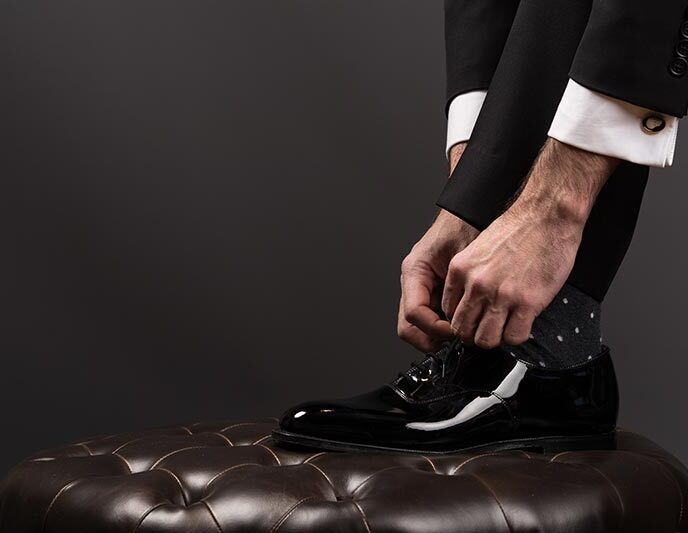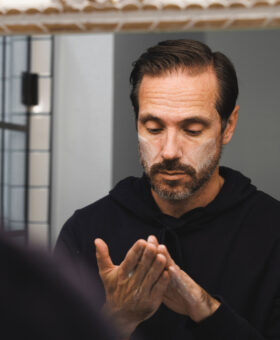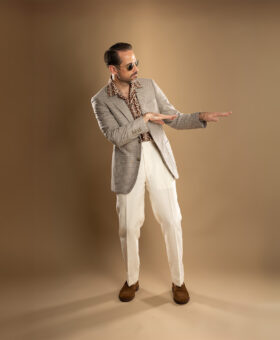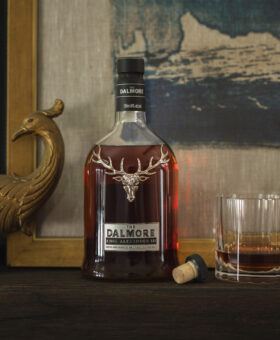

Share
Everything that makes a classic tuxedo a classic tuxedo
When it comes to men’s suiting, styles and options can vary pretty dramatically from one product to the next. A sportcoat can have any variety of buttons, lapels, pockets, and still be a sportcoat. A suit can come in cotton, linen, wool, and still be a suit.In this way, a tuxedo stands alone, as there are very specific and inflexible attributes that truly make a tuxedo a tuxedo. So let’s run through everything that sets a tuxedo apart from just any suit.

| BRIAN WEARS | Polo Ralph Lauren tuxedo and cummerbund, Reiss shirt, Brooks Brothers bow tie and shoes, Paul Smith cufflinks | PHOTOGRAPHY | by Rob McIver Photo
Fabric. If you’re a true purist, a tuxedo is always black, and typically in a worsted wool. As the rules have relaxed over the years, you’ll now find tuxedos in a variety of colors, usually dark, with the exception of the white dinner jacket.
Lapels. Perhaps the most distinguishing aspect of a tuxedo jacket, the lapels are never the same fabric as the rest of the garment. Instead, they have a satin or grosgrain facing, and are almost always black, again with the exception of white dinner jackets that occasionally come with matching white satin lapels. Peak lapels are the most common, though shawl lapels give them a run for their money, but notch lapels are generally excluded.

Buttons. The standard for everyday suiting these days is two buttons – three is an option, a 2/3 roll is a classic, but for a tuxedo, it’s always one button. The button itself is unique as well, usually covered in the same satin or grosgrain facing as the lapels.


Vents. Similar to buttons, where you can take your pick of vent options for a suit or blazer, a tuxedo is limited to one vent. And that’s at the most. In fact, many tuxedos come with no vents, though this can limit comfort and wearability.
Waist Covering. Nothing kills the clean lines that make a tuxedo so alluring like an unsightly triangular patch of white under the jacket button, so a cummerbund is vital to completing the look. A waistcoat is a viable, if slightly outdated option.
Pockets. Coming back to those clean lines, pocketing on tuxedos is just as slick, with jackets almost always coming with jetted pockets.

Trousers. Tuxedo trousers are also quite distinctive, with a stripe of fabric in the same material as the lapels running down the outseam of the pant. Also, tuxedo trousers almost never have belt loops, opting for the cleaner look of waist tabs. Finally, hems are never cuffed. Yet another way to maintain those clean lines.
Accessories and Accoutrements. Neckwear is a black bowtie, and traditionally in the same fabric as the lapels. Shirting is white, with a bib front and French cuffs, and customizations include pleated or pique bibs, hidden lapels, or stud buttons.

Footwear. Shoes are black, and either patent leather or high-shine calfskin. Pumps, aka loafers, were actually the original standard, but oxfords have become the construction of choice.
Again, although black tie is generally a very strict dress code, these days the rules have relaxed somewhat. As a result, variations are more and more acceptable. However, these classics are a safe, solid starting point.
And that, my friends, is a classic tux! All these standards may feel stuffy and restrictive, but they’re all there for a reason, and once you get that perfect tuxedo on your body, you will see the powerful effect.
Thanks for reading.
Stylishly Yours,
Adam Lehman
He Spoke Style






































